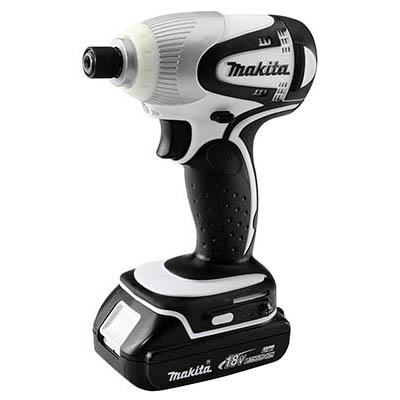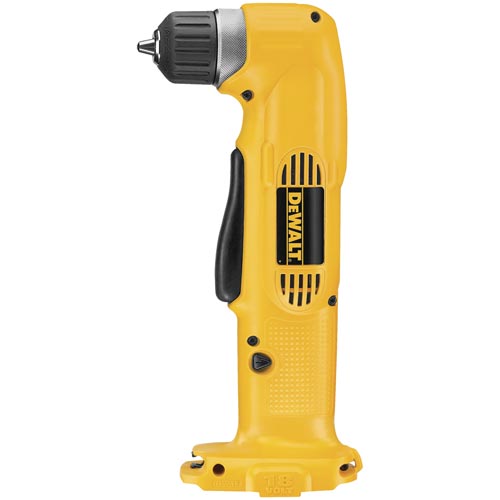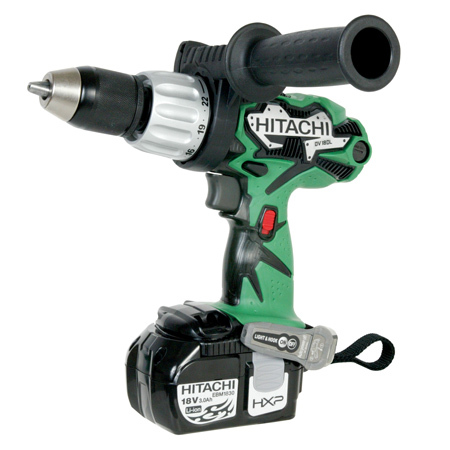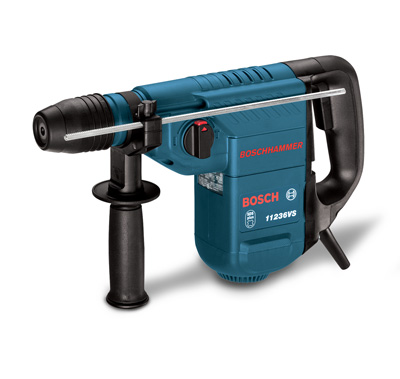Why Read This Article?
Finish Nailer Repair - Replacing the Driver Guide (Ridgid Part # 79004001022)
Article Breakdown
Finish Nailer Repair - Replacing the Driver Guide (Ridgid Part # 79004001022)
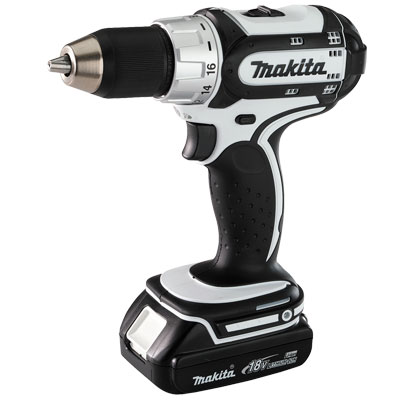 [Back to top]
Impact Drivers
Impact drivers are primarily just that, drivers, although they look like and are often referred to as "drills." Drivers decrease the risk of breaking screws and other fastener heads by turning in short, high torque bursts that reduce friction and stress on hardware.
These are small, lightweight specialty tools that can pack a punch. Impact drivers are especially important when driving into harder materials, because they can handle the workload easily.
Most cordless impact drivers come between 12v and 24v, but if a project truly calls for an impact driver, starting around 18v range is usually best. Lighter workloads can be handled with less expense by lower voltage drill/drivers. Also, it's become more and more important to compare cordless impact driver specifications if the driver is needed for drilling into hardwood or other dense material.
[Back to top]
Impact Drivers
Impact drivers are primarily just that, drivers, although they look like and are often referred to as "drills." Drivers decrease the risk of breaking screws and other fastener heads by turning in short, high torque bursts that reduce friction and stress on hardware.
These are small, lightweight specialty tools that can pack a punch. Impact drivers are especially important when driving into harder materials, because they can handle the workload easily.
Most cordless impact drivers come between 12v and 24v, but if a project truly calls for an impact driver, starting around 18v range is usually best. Lighter workloads can be handled with less expense by lower voltage drill/drivers. Also, it's become more and more important to compare cordless impact driver specifications if the driver is needed for drilling into hardwood or other dense material.
Right Angle Drills Right angle drills are angled to fit into small places and reach where other cordless drills can't. Their chucks are set at a 90° angle to the body of the tool. Like drill/drivers, right angle drills usually handle both driving hardware and drilling holes, and are most needed when working around carpentry, studs, electrical work, and plumbing. Cordless right angle drills are available from 9.6v and lower, to 24v.
Hammering Drills
Hammering drills are for drilling into stone, concrete, and other masonry. Hammer drills "hammer" by rapidly and forcefully moving the drill chuck back and forth as they turn. There are two major types of cordless hammer drills to consider.
Some hammering drills use a different chuck system than other cordless drills, a chuck system called SDS (Special Direct System).
Cordless Combi Drills
Cordless Combi Drills get the "combi" because they are actually drill/drivers that also offer a hammering drill feature, thus having a combination of features. This hammering drill feature is usually selectable on the drill clutch. Combi drills often go by the name of Cordless Hammer Drills.
Cordless hammer drills come in a wide range of voltages from about 15.6v to 36v. Only the largest models should be used for very heavy work, like drilling through concrete. Correctly estimating the work capacity of a cordless combi drill is especially important, since the risk of overloading their motors with heavy work is high.
Rotary hammer drills are usually fitted with an SDS chuck system. In an SDS chuck, bits actually lock into place in-line with the drill motor shaft instead of simply being held into place, as with a typical 3-jaw chuck system. There are even a few variations of SDS systems, and it's important to purchase bits for the right system.
Rotary hammer drills differ from other hammering drills because of the use of a piston while drilling. As the drill turns, the piston strikes the back of the drill bit being used, forcing it further into the hole being drilled and clearing away debris.
(Side Note: Makita even offers rotary hammer drills with timed piston systems that maintain maximum drilling efficiency with each measured turn of the drill and impact of the piston.)
Rotary hammer drills are needed for heavy duty masonry drilling, but choosing a corded rotary drill is often the best choice for high workloads, because the cordless versions quickly become expensive and heavy with increased power.
These drills are generally manufactured in the 18v to 36v range.
Cordless Drill Batteries
Cordless drills always need batteries that match their user's needs, regardless of the type of drill being used, and regardless of the job. Users should prepare to take a close look at battery options, accessories, features, and specifications for any cordless power drill purchase.
Drill batteries are not necessarily the most important feature to look at for choosing the type of drill to be purchased, it's just that even a great cordless drill will not deliver performance without being powered to meet the demands of its use. Also, charge time and battery life are critical factors to tailor to each user's specific needs.
Below is an explanation of the three kinds of cordless drill batteries with a list of pros and cons for each:
Nickel Cadmium (NiCd)
Traditional nickel cadmium batteries are still used today, because they are tough and dependable, and they are also used in cordless power drills.
Pros:
-
- NiCd batteries are more difficult to damage.
- NiCd batteries have a longer charge/discharge cycle of about 1,000 charges, giving them an overall longer life.
- They put out strong current flow.
- They are less easily damaged by being stored in deep discharge, although it is still not recommended.
- NiCd batteries are less sensitive to temperature change.
- They are less expensive than other rechargeable drill batteries.
Cons:
-
- Nickel Cadmium batteries are the heaviest of the three types.
- NiCds shouldn't be allowed to drop below about 70% charge between charges, or the battery lifetime can be shortened.
- Most NiCd batteries must be allowed to cool before being recharged.
- The cadmium in NiCd batteries is very damaging to the environment, and must be disposed of correctly.
Nickel Hydride (NiMH)
Nickel-metal hydride batteries (NiMH) are an environmentally friendly alternative to NiCd batteries, and they offer other advantages.
Pros:
-
- NiMH batteries are a little lighter than NiCd batteries.
- They have a higher energy density, meaning that the battery life between charges is longer than NiCd batteries, so they will run longer on a single charge.
- They are less expensive than Li-Ion batteries.
- They are not destructive to the environment.
Cons:
-
- NiMH batteries are more sensitive to temperature, especially cold temperatures, and should only be stored or operated between about 33°F - 103°F.
- Deep discharge and lack of use will damage NiMH batteries, shortening their lifespan and limiting their storage capacity.
- They have an overall recycle life of about half that of NiCd batteries at about 500 charges.
- They are more expensive than NiCD batteries.
Lithium-Ion
Lithium ion batteries (Li-Ion) are the newest technology in rechargeable batteries to be introduced to cordless power tools. They are definitely the best choice of the three types of batteries, outperforming in all areas, but they are also expensive.
Pros:
-
- Li-Ion batteries are the most light-weight of the three kinds of rechargeable batteries.
- Li-Ion batteries benefit from high energy density like NiMH batteries do.
- They are much less sensitive to damage from temperature changes than NiMH batteries.
- Li-Ions are not restricted in the shape of their design like NiCd and NiMH batteries are, and can be designed in almost any shape for better tool balance.
- They do not suffer from self-discharge and memory effect like NiCd and NiMH batteries, meaning that they're much less sensitive to recharging and storage methods.
- They have the longest charge/recharge life cycle of all three types of batteries.
- Li-Ion batteries are not destructive to the environment.
Cons:
-
- Excessive overheating of Li-Ion batteries can damage or destroy them, which can occasionally happen during recharge. However, most rechargers and Li-Ion batteries are designed with safety features to prevent overheating.
- Li-Ion batteries are the most expensive batteries of these three types used in cordless power drills.
Amperage:
This is one component of how a cordless drill's motor is rated. The amperage rating is good thing to compare between models because it accounts for how much torque the drill will be able to handle.
Amp-
Ampere-hours (Ah) are the units for how battery life is measured in rechargeable batteries. More amp-hours means more battery life per charge, so comparing specifications between batteries is important.
Voltage:
This will refer to the power of the rechargeable battery and also the overall power of the tool. The speed of a drill is directly affected by its voltage with more voltage meaning higher drilling speed.
Voltage also helps match a drill's overall power to its work. Very roughly, and with some overlap, the scale for matching tool voltage to workload is like this:
Light Work: 7v-15v
Medium Work: 12v-18v
Heavy Work: 18v-36v
Smart
Chargers:
Smart chargers are manufactured to help increase the life and efficiency of rechargeable batteries. Some smart chargers offer what is called a "trickle-charge" feature that is especially helpful for NiMH batteries. Considering these factors is important for finding drill batteries that will meet the user's needs. Having at least two batteries for each cordless drill is a must to avoid waiting for batteries to charge in the middle of a job. Sometimes having a second charger is handy too. One last thing on batteries. How a power tool feels in your hands may be the deciding factor on voltage range and battery life, because even the lightest batteries will add weight to a cordless drill, affecting both its overall weight and balance. [Back to top] Cordless Drill Features There are several features drills that are common to almost all cordless power drills. A cordless drill buyer should expect these features to be included with a new drill purchase:
Keyless
Chucks:
With the exception of drills using the SDS system, like hammer drills, most cordless drills use the three jaws chuck system to hold bits in place. Most drills come with chucks between 3/8" and 1/2". Keyless chucks should be considered standard by cordless drill buyers.
Adjustable
Clutch:
Unless absolutely not needed, buyers should expect a cordless power drill to have adjustable torque settings with an adjustable clutch. Clutch settings are usually selected by rotating the chuck, and can help a user drive screws to an accurate depth.
Speed
Settings:
Drills should have more than one speed setting, and most drills for mostapplications should come equipped with variable speed switches which provide the user with sensitive control over the drill's speed.
Reverse
Setting:
Drills should be expected to come with a reverse setting.
Safety:
Drills should come equipped with a safety switch or button.
Any additional features should be considered on an as-needed basis for most buyers. Additional features can include: flashlights, bit storage, single-sleeve chucks (for one-handed bit changing), built-in levels, belt hooks, and additional attachments.
[Back to top]
Purchasing Guidelines for Cordless Drills
The order of information in this article closely follows the order of steps in our purchasing guide for cordless power drills. Here are the steps that we recommend taking:
1. Decide which type of cordless drill is needed by what kind of work it needs to do.
Remember,
- Drill/drivers for light to heavy non-masonry drilling and fastening,
- Impact drivers for high-torque driving of screws and fasteners,
- Right angle drills for hard to reach areas, and
- Hammering drills for masonry.
Make sure that the brands and types of drills you've narrowed down also offer batteries that match your specific needs. Frequency of use, temperature exposure and budget will probably be the strongest deciding factors when choosing a battery.
Buying a drill that comes with at least two batteries will be a must for most users. 3. Check the drill's features and be sure that it includes what you're looking for.
Are the expected features included with this drill? Does it include any other features you need, like an LED light or a built-in level? 4. Match the voltage of the drill to the job.
Light Work, such as small homeowner projects and other applications around a home, can be handled nicely by cordless drills in the 7v-15v range.
Medium Work, such as carpentry with plywood and hardboard, larger projects, and frequent use, is best handled by cordless drills in the 12v-18v range, depending on the project.
Heavy Work should be handled by drills in the 18v-36v range. Cordless drills start getting heavy and expensive at about the 18v barrier, so make sure that the high power is necessary. 5. Hold the drill and see how it feels in your hands.
With the type of drill, battery, features, and voltage chosen, getting a feel for the balance and weight of the drill is the final step. Some advice suggests holding the drill overhead for at least 30 seconds to judge how quickly fatigue sets in. 6. Consider budget.
Matching the right drill to a given job is so important, because, like with other power tools, the general rule is that you get what you pay for. Overestimating needs can mean paying for more of a power tool than is necessary, and underestimating can mean buying a replacement drill soon after purchase.
We never get tired of echoing this same advice again and again: choose the type, range, and features that fit your needs, and then buy the best tool with those options you can reasonably afford.
[Back to top]
Conclusion
Many drill users suggest owning more than one cordless power drill when tackling many applications, instead of trying to find just one drill to do it all. Also, this article's information may simply help a buyer decide that a dedicated power drill for heavy duty jobs is best, and that a medium power cordless model is best to cover everything else.
Knowing how to custom fit any tool purchase to your needs can make choosing a power tool exciting. Thoughtful cordless drill buyers can look forward to owning great tools, because good tools give back to their users most when they are thoughtfully selected.
Any cordless drill will eventually need to see some repairs and parts replacement to meet the potential of its service life. When the time come to replace your cordless drill's parts, visit our Cordless Drills Parts page to begin your search, or search with your drill's model number in the field at the top of this page. eReplacementParts.com looks forward to helping you make your power tools last.
[Back to top]
What we're about.


















































